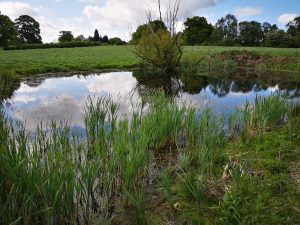Biodiversity Offsetting: Balancing Development with Conservation
In an era of unprecedented ecological challenges, biodiversity offsetting has emerged as a key tool for harmonising economic growth with environmental preservation. This approach seeks to balance the impact of development on nature, ensuring that any damage to one area is compensated by enhancement or protection of another. But what does biodiversity offsetting really entail, and how can it serve both development goals and conservation efforts?
Understanding Biodiversity Offsetting
Biodiversity offsetting is a process that seeks to compensate for the inevitable harm that development projects cause to biodiversity. This is achieved by ensuring that equivalent biodiversity gains occur elsewhere, thus “offsetting” the harm. In essence, it’s a system that encourages thoughtful development, promoting growth without compromising ecological integrity.
Why Biodiversity Offsetting is Crucial for Development
From the perspective of law firms, property agents, landowners, and property developers, biodiversity offsetting offers several benefits. Firstly, it can enhance the acceptance of development projects by local communities and planning authorities. A clear commitment to biodiversity offsetting demonstrates an understanding of environmental responsibility and contributes to the positive image of a project.
Moreover, biodiversity offsetting can facilitate smoother navigation through the planning system. Many planning authorities now require evidence of net positive outcomes for biodiversity from development projects. Having an offsetting plan in place can expedite this process and reduce the risk of costly delays.
The Conservation Angle
Biodiversity offsetting not only facilitates development but also promotes conservation goals. By requiring biodiversity losses to be compensated by gains elsewhere, it can result in the creation, enhancement, and long-term management of important habitats. Offsetting can therefore contribute significantly to local, regional, and even national conservation strategies.
Implementing Biodiversity Offsetting
Successful implementation of biodiversity offsetting requires careful planning and expert input. Key steps include accurately assessing the biodiversity present on a site before development, identifying appropriate offsetting measures, and monitoring the success of these measures over time.
It’s worth noting that biodiversity offsetting should not be seen as an alternative to avoiding harm to biodiversity where possible. It’s part of a ‘mitigation hierarchy’, where the first steps are always to seek to avoid harm, then minimise it, and only then to offset any remaining impact.
In conclusion, biodiversity offsetting represents a balanced approach to development that can meet both economic and ecological needs. It ensures that development can occur without sacrificing our precious natural environment, making it a critical consideration for all parties involved in the property development process.
If you are seeking expert guidance on incorporating biodiversity offsetting into your development plans or need assistance in creating and implementing an offsetting strategy, our team of ecological consultants is here to help. Please don’t hesitate to reach out to us for further information or to arrange a consultation.
In an era of unprecedented ecological challenges, biodiversity offsetting has emerged as a key tool for harmonising economic growth with environmental preservation. This approach seeks to balance the impact of development on nature, ensuring that any damage to one area is compensated by enhancement or protection of another. But what does biodiversity offsetting really entail,…
With growing global awareness around environmental conservation, the fulfilment of biodiversity net gain requirements has become increasingly integral in the world of property development. These requirements, designed to promote sustainable development practices, are now an essential consideration for law firms, property agents, landowners, and developers. This article explores what biodiversity net gain requirements are, why…
In the competitive world of property development, a Biodiversity Net Gain (BNG) consultant is fast becoming an indispensable asset. Providing specialist advice and insight, they guide developers, law firms, property agents, and landowners through the complexities of sustainable development. But what can a biodiversity net gain consultant do for your project? How can they ensure…
As we grapple with the global environmental crisis, the concept of biodiversity credits is gaining recognition in the world of property development. Biodiversity credits offer a practical and innovative approach to balancing the necessities of development with the urgency of ecological conservation. As law firms, property agents, landowners, and property developers navigate their projects, understanding…
For property developers and landowners, navigating environmental compliance can be a complex task. One important, yet often overlooked, component of this process is the bat survey. Conducting a bat survey is more than a due diligence task—it’s a crucial step in demonstrating compliance with environmental regulations, and therefore essential for any responsible development project or…
- « Previous
- 1
- 2


